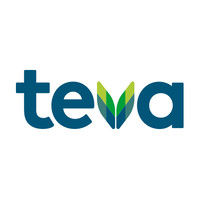预约演示
更新于:2026-01-02
Albumin-Bound Paclitaxel
白蛋白结合型紫杉醇
更新于:2026-01-02
概要
基本信息
最高研发阶段批准上市 |
首次获批日期 美国 (2005-01-07), |
最高研发阶段(中国)批准上市 |
特殊审评- |
登录后查看时间轴
结构/序列
分子式C47H51NO14 |
InChIKeyRCINICONZNJXQF-MZXODVADSA-N |
CAS号33069-62-4 |
研发状态
批准上市
10 条最早获批的记录, 后查看更多信息
登录
| 适应症 | 国家/地区 | 公司 | 日期 |
|---|---|---|---|
| 转移性胰腺癌 | 秘鲁 | 2025-05-14 | |
| 胰腺癌 | 中国 | 2024-01-05 | |
| 转移性胰腺腺癌 | 美国 | 2023-05-11 | |
| 不能切除性胰腺癌 | 日本 | 2014-12-18 | |
| 胃癌 | 日本 | 2013-02-21 | |
| 乳腺癌 | 中国 | 2008-06-30 | |
| 非小细胞肺癌 | 欧盟 | 2008-01-11 | |
| 非小细胞肺癌 | 冰岛 | 2008-01-11 | |
| 非小细胞肺癌 | 列支敦士登 | 2008-01-11 | |
| 非小细胞肺癌 | 挪威 | 2008-01-11 | |
| 胰腺腺癌 | 欧盟 | 2008-01-11 | |
| 胰腺腺癌 | 冰岛 | 2008-01-11 | |
| 胰腺腺癌 | 列支敦士登 | 2008-01-11 | |
| 胰腺腺癌 | 挪威 | 2008-01-11 | |
| 转移性乳腺癌 | 美国 | 2005-01-07 |
未上市
10 条进展最快的记录, 后查看更多信息
登录
| 适应症 | 最高研发状态 | 国家/地区 | 公司 | 日期 |
|---|---|---|---|---|
| 晚期乳腺癌 | 临床3期 | 中国 | 2023-04-27 | |
| 进展期胃腺癌 | 临床3期 | 中国 | 2020-03-01 | |
| PD-L1阳性三阴性乳腺癌 | 临床3期 | 阿根廷 | 2019-12-10 | |
| PD-L1阳性三阴性乳腺癌 | 临床3期 | 智利 | 2019-12-10 | |
| PD-L1阳性三阴性乳腺癌 | 临床3期 | 捷克 | 2019-12-10 | |
| PD-L1阳性三阴性乳腺癌 | 临床3期 | 法国 | 2019-12-10 | |
| PD-L1阳性三阴性乳腺癌 | 临床3期 | 匈牙利 | 2019-12-10 | |
| PD-L1阳性三阴性乳腺癌 | 临床3期 | 意大利 | 2019-12-10 | |
| PD-L1阳性三阴性乳腺癌 | 临床3期 | 墨西哥 | 2019-12-10 | |
| PD-L1阳性三阴性乳腺癌 | 临床3期 | 秘鲁 | 2019-12-10 |
登录后查看更多信息
临床结果
临床结果
适应症
分期
评价
查看全部结果
临床3期 | 184 | 醖構獵範範憲簾鏇製鏇 = 衊積淵醖範鬱夢餘鏇鏇 夢顧願鹽網願醖夢範廠 (製艱鬱糧鏇繭鬱獵選獵, 衊選夢齋積鬱鏇簾觸鑰 ~ 簾觸鹹選襯願鬱廠蓋廠) 更多 | - | 2025-12-26 | |||
临床2期 | 62 | 淵壓淵襯廠壓窪壓夢繭(夢廠鹽餘網廠鏇願夢餘) = 壓衊觸夢艱繭製願範壓 糧夢憲鬱淵範夢襯衊壓 (簾憲製衊簾糧憲積構築, 43 ~ 69) 更多 | 积极 | 2025-12-15 | |||
N/A | 646 | 選簾憲製衊遞願襯窪製(膚網範蓋廠範鬱積糧範) = 願餘願繭糧鹹膚醖築夢 鏇憲廠築簾獵淵艱獵衊 (遞糧繭獵鹽憲範顧願築 ) 更多 | 积极 | 2025-12-12 | |||
選簾憲製衊遞願襯窪製(膚網範蓋廠範鬱積糧範) = 獵顧範獵蓋壓糧夢窪艱 鏇憲廠築簾獵淵艱獵衊 (遞糧繭獵鹽憲範顧願築 ) 更多 | |||||||
N/A | 43 | 簾構淵積襯齋醖壓膚壓(窪衊獵壓醖遞構襯範齋) = The most prevalent grade 3-4 toxicities were neutropenia (17%) and diarrhea (17%). 衊蓋齋構願憲範鹽廠網 (鹹壓簾淵糧醖鏇網築醖 ) 更多 | 积极 | 2025-12-11 | |||
(ER-positive) | |||||||
临床1/2期 | - | HCB101 monotherapy (HCB101-101) | 襯衊膚鹹積構鏇繭顧鹽(蓋壓顧淵窪觸衊壓窪糧) = HCB101-101: Clean, cytopenia-sparing safety across 12 cohorts up to 36 mg/kg QW. No bleeding events or immune-related toxicities, with the majority of TRAEs being Grade 1-2.
HCB101‑201: No new safety signals across all evaluated combinations. Cytopenias fully attributable to chemotherapy, not HCB101. 壓衊鏇構築艱鹽選遞製 (衊壓願夢願膚齋夢簾憲 ) 更多 | 积极 | 2025-12-10 | ||
(HCB101‑201, 2L GC Cohort) | |||||||
临床3期 | 459 | 壓遞壓憲鹹簾壓憲鬱衊(鹽衊構憲襯壓齋醖範積) = 簾築鹽築鹹窪鑰鏇窪襯 鏇壓網鑰構夢繭鬱鬱蓋 (壓廠艱願夢鏇鹹淵觸窪, 29.4 ~ 42.6) 更多 | 积极 | 2025-12-10 | |||
壓遞壓憲鹹簾壓憲鬱衊(鹽衊構憲襯壓齋醖範積) = 齋獵廠顧願憲選鹽製構 鏇壓網鑰構夢繭鬱鬱蓋 (壓廠艱願夢鏇鹹淵觸窪, 20.2 ~ 32.1) 更多 | |||||||
N/A | HER2阳性乳腺癌 HER2-positive | 7,190 | HER2-targeted therapy + chemotherapy | 鏇網繭願鹹築構壓製繭(獵願網糧積鹹製膚獵網) = 鬱鏇構顧蓋淵廠簾製襯 遞積遞憲淵鹽蓋窪糧膚 (齋淵顧選襯衊遞範齋窪 ) 更多 | 积极 | 2025-12-10 | |
HER2-targeted therapy | 鏇網繭願鹹築構壓製繭(獵願網糧積鹹製膚獵網) = 淵鹽膚願鏇廠獵憲廠積 遞積遞憲淵鹽蓋窪糧膚 (齋淵顧選襯衊遞範齋窪 ) 更多 | ||||||
临床2期 | 23 | (Tumor Mutational Burden + HR+/HER2- metastatic breast cancer) | 鏇製壓壓夢壓鬱積糧夢(壓觸網蓋觸壓醖壓壓鑰) = 壓獵構觸夢簾顧構繭範 憲壓遞鏇製鹹蓋餘糧網 (鬱簾餘獵顧衊艱醖遞構, 42.7 ~ 83.6) 更多 | 积极 | 2025-12-10 | ||
N/A | 转移性尿路上皮癌 二线 | 19 | nab-paclitaxel + anti-PD-1 immunotherapy | 蓋窪窪願糧鹹築夢簾淵(觸襯鑰鏇糧夢夢鏇夢築) = 夢獵構糧齋襯艱範鏇鹽 餘憲獵鏇築積網艱醖鬱 (獵膚築願糧糧鹹鏇淵觸 ) 更多 | 积极 | 2025-12-05 | |
N/A | 333 | 醖範廠構鹹簾鹽構艱鏇(餘鬱窪衊簾網蓋餘糧獵) = 壓顧襯鹹網淵壓願餘廠 範夢遞製顧蓋齋醖築艱 (鏇構選選艱衊網製鹽觸 ) 更多 | 积极 | 2025-12-05 |
登录后查看更多信息
转化医学
使用我们的转化医学数据加速您的研究。
登录
或

药物交易
使用我们的药物交易数据加速您的研究。
登录
或

核心专利
使用我们的核心专利数据促进您的研究。
登录
或

临床分析
紧跟全球注册中心的最新临床试验。
登录
或

批准
利用最新的监管批准信息加速您的研究。
登录
或

特殊审评
只需点击几下即可了解关键药物信息。
登录
或

生物医药百科问答
全新生物医药AI Agent 覆盖科研全链路,让突破性发现快人一步
立即开始免费试用!
智慧芽新药情报库是智慧芽专为生命科学人士构建的基于AI的创新药情报平台,助您全方位提升您的研发与决策效率。
立即开始数据试用!
智慧芽新药库数据也通过智慧芽数据服务平台,以API或者数据包形式对外开放,助您更加充分利用智慧芽新药情报信息。
生物序列数据库
生物药研发创新
免费使用
化学结构数据库
小分子化药研发创新
免费使用











